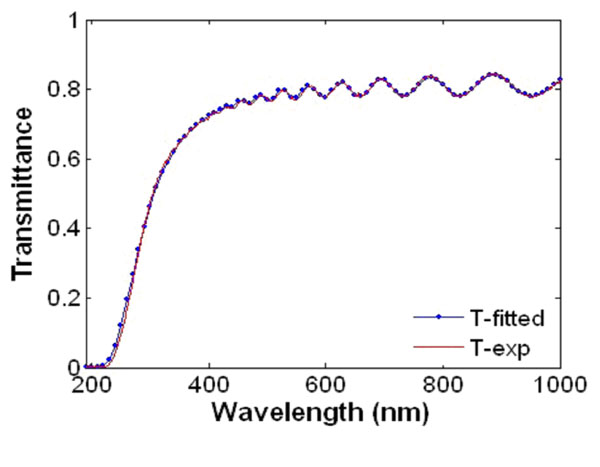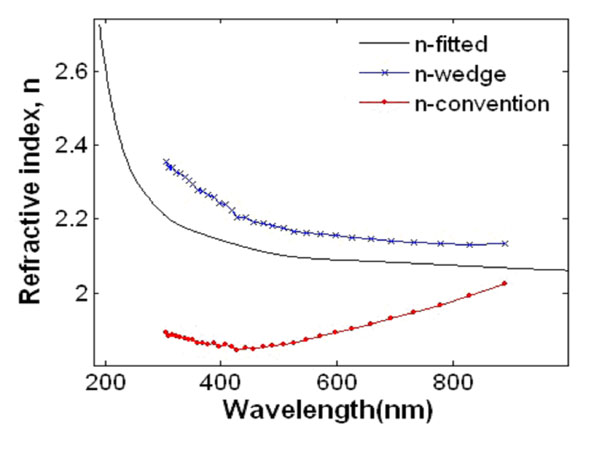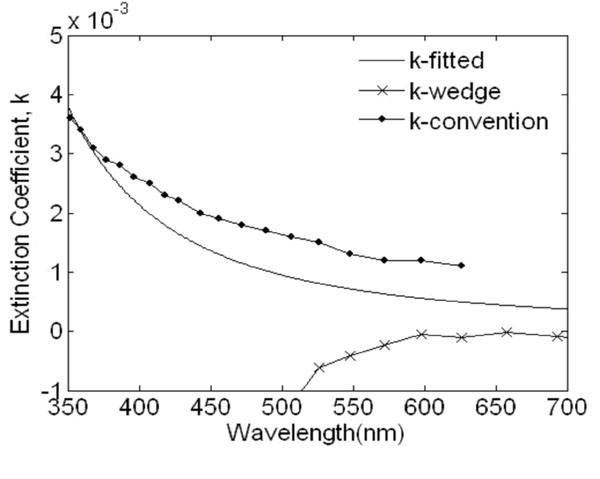Laser Spectroscopy and
Nanoparticle Research
at The University of Texas in Austin
Nanoparticle Research
at The University of Texas in Austin
Determination of properties of wedged, rough, and absorbing thin films using a novel numerical method
Optical constants such as refractive index, n, and extinction coefficient, k, are commonly calculated from optical transmission and reflection spectra of thin films. An accurate determination of the value of the wavelength-dependent optical constants is very useful because it gives fundamental information about the optical band gap, defect levels, oscillator energy and oscillator strength, etc. Practically speaking, optical constants are essential for the design and modeling of optical devices and optical coatings. Most of the published literature does not consider the non-uniformity in thickness and surface roughness of the films that occur in many practical instances. The presence of thickness variations and surface roughness can drastically change the transmission spectra, and thus the formulae used for uniform smooth films are no longer valid because the interference structure of the spectra becomes quite distorted. In general as thickness variations increase, visibility of the interference fringes is decreased, i.e. the transmission maxima decrease and the transmission minima increase, and the envelope of the spectrum shrinks. The determination of optical constants using conventional methods results in an overestimate of the thickness and erroneous refractive index dispersion, especially in the short-wavelength region of the spectrum.
We developed a novel, physically attractive and simple numerical method that considers non-uniformity in thickness and surface roughness of the film. Our Optimum Parameter Extraction (OPE) method allows the accurate calculation of film thickness, thickness variation, refractive index, and extinction coefficient from only a transmission spectrum. We also obtain optical constants using the wedge-shaped envelope method and the conventional envelope method for comparison. We compare results for test cases and for actual AlN thin films fabricated in our laboratory.
(a)

(b)

(c)

Optical
properties of an AlN film deposited at
high fluence and a 500ºC substrate temperature: (a) transmittance,
(b)
refractive index, and (c) extinction coefficient. Notation
in the legends: exp (experimental
measurement); fitted (the OPE method); wedge (wedge-shaped envelope
method);
convention (conventional envelope method).
For more information please read our publication @:
Baek, J, Kovar, D, Keto, JW, et al.; "Determination of properties of wedged, nonuniformly thick, and absorbing thin films by using a new numerical method"
APPL OPTICS 45 (7): 1627-1639, 2006